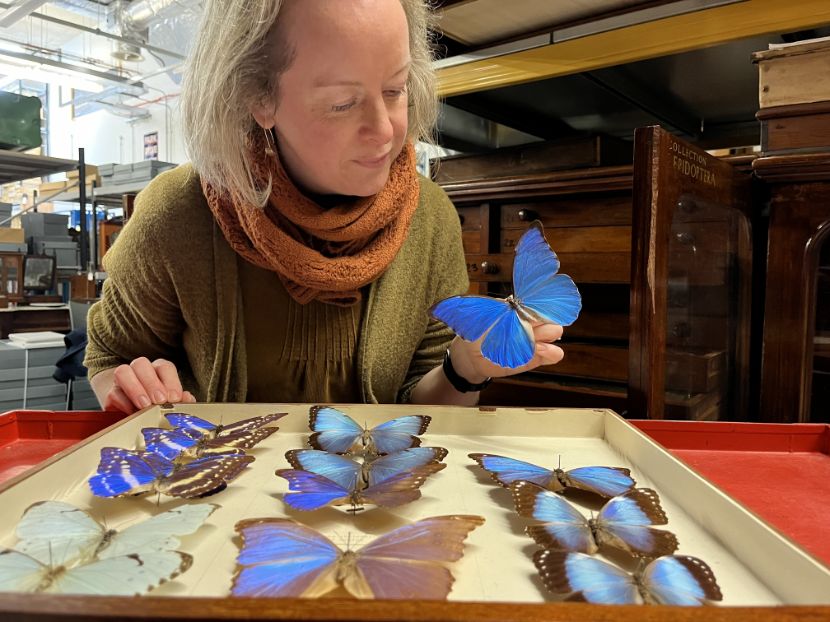
13 Feb 2024
Stunning butterfly collection is a flight for sore eyes
A colourful kaleidoscope of some of the world’s rarest and most beautiful butterflies has been carefully conserved by experts in Leeds.
The stunning array of winged insects housed at Leeds Discovery Centre includes hundreds of species from across the globe, many collected by explorers and scientists more than a century ago.
The precious collection is being carefully counted and conserved ahead of a series of behind-the-scenes tours of the impressive centre, which will take place over the school half term holidays.
Among the butterflies and moths which can be found at the centre is a magnificent example of a Blue Morpho, among the largest butterflies in the world, with wings spanning from five to eight inches.
Found in Central and South America, the butterfly’s vivid blue colouring comes from light reflected off microscopic scales on the backs of its wings.
Other examples include a number of Sloane’s Urania, an extinct species of moth with iridescent red, blue and green markings, which was is believed to have been wiped out in the late 1890s due to habitat loss in its native Jamaica.
The moth takes its name from English collector Sir Hans Sloane, whose own collection became the foundation of the British Museum.
Also part of the collection are a number of Rajah Brooke's birdwings, an electric green and black butterfly found in the rainforests of the Thai-Malay Peninsula, Borneo, Natuna, Sumatra.
The examples in the Leeds collection were among objects seized from smugglers who had attempted to illegally import them into the UK.
Clare Brown, Leeds Museums and Galleries’ curator of natural sciences, said: “Butterflies and moths are among the most visually stunning insects in the world, and you can clearly see from the scope and beauty of our collection how much they have fascinated humans through the ages.
“Seeing these unique, incredible colours and shapes for the first time in the wild must have been a genuinely unforgettable and captivating experience.
“Sadly the fact that many of the species have since become endangered or even extinct also demonstrates both their fragility and the importance of learning from collections like ours, so we can ensure these remarkable insects and their precarious habitats are protected.”
Collecting specimens of animals and insects became a popular pursuit for Western explorers and scientists from around the seventeenth century.
Wealthy collectors would pay handsomely for specimens brought back from expeditions, and many of the world’s largest and oldest collections were created this way.
However, more recently, awareness about the impact of collecting on insects and their habitats has led to more sustainable and ethical methods of study and collection.
Councillor Jonathan Pryor, Leeds City Council’s deputy leader and executive member for economy, culture and education, said: “Our world class museums and galleries collection includes some incredible examples of animals and insects from around the world.
“This gives visitors the opportunity to both learn about them and to consider the impact our actions, collectively and individually, have on the world around us and how we can better protect our planet and its vulnerable species.”
Free, behind-the-scenes tours of Leeds Discovery centre are taking place over the February half term week and must be booked in advance.
To find out more about times and how to book, please visit: What's on at Leeds Discovery Centre - Leeds Museums & Galleries
ENDS
For media enquiries contact:
Leeds City Council Communications team
communicationsteam@leeds.gov.uk